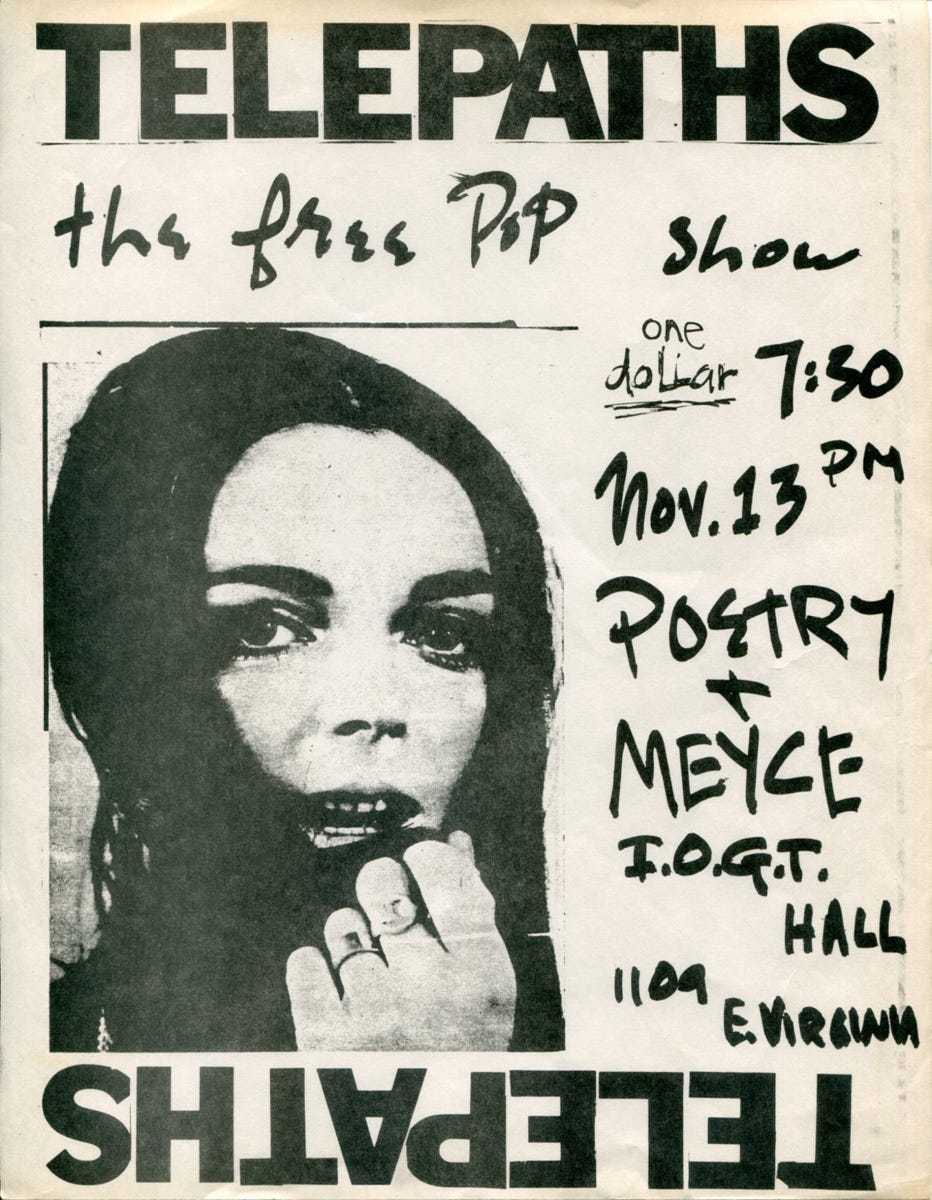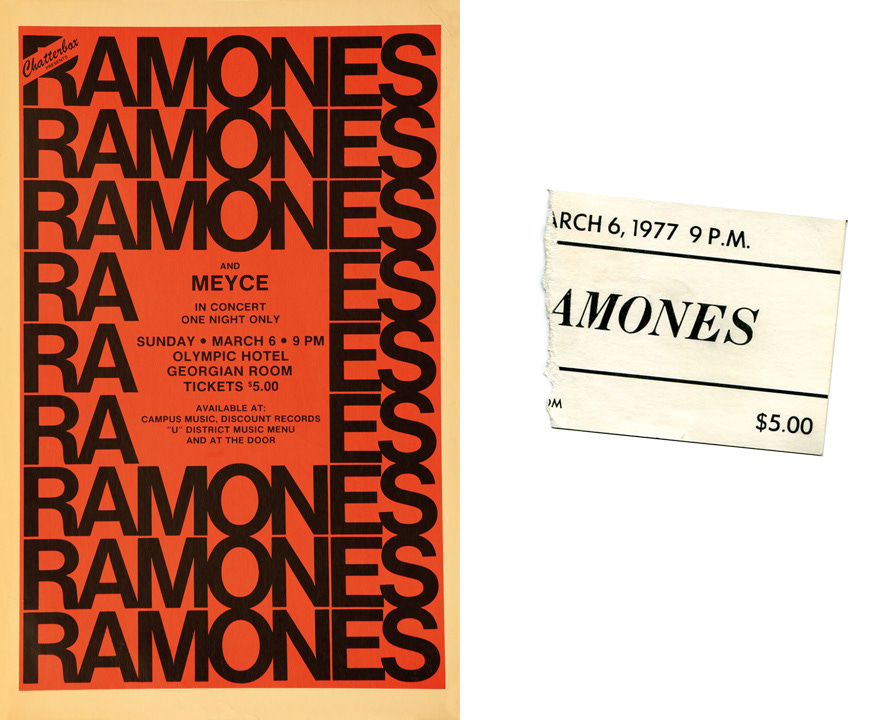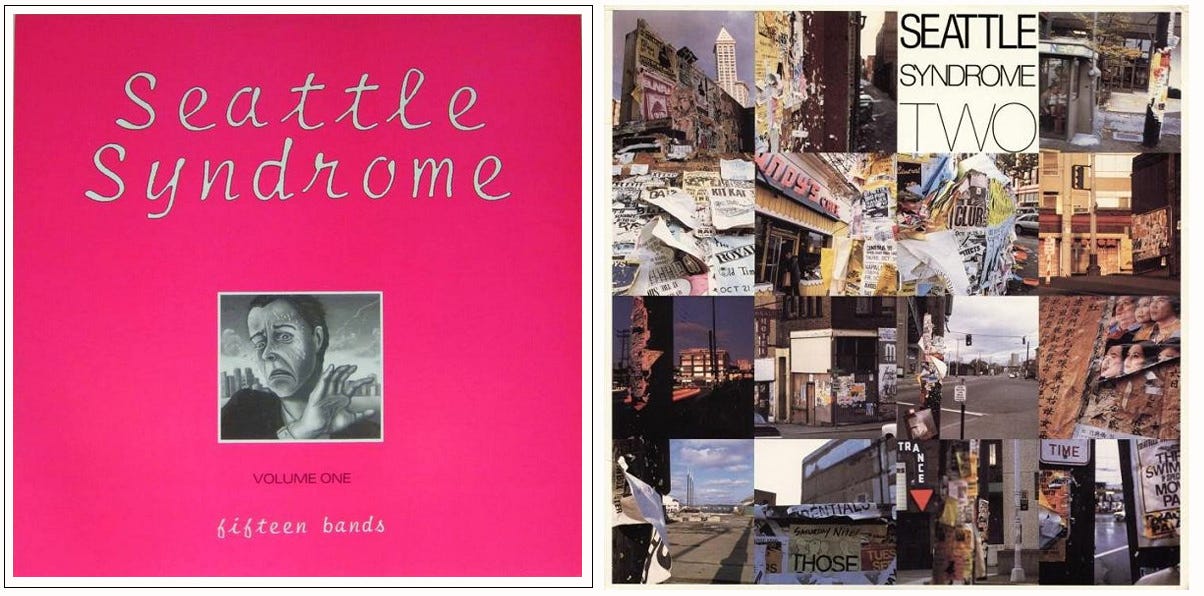The Record Store Years 34) Chatterbox, Telepaths & The Music Scene Before Grunge
A memoir of 25 years (1975-2000) spent working in the world of records & music in Seattle, with occasional side trips into writings on Led Zeppelin and other adventures from my musical life.
When I first started at Cellophane Square in ’75 the world-famous Seattle ‘Music Scene’ didn’t exist yet, however the roots of it were there in a vibrant and varied group of kids that I got to know across the counter as customers. Though most formed bands eventually identified as punk, their initial influences leaned towards glam and prog rock with Iggy, Bowie and King Crimson being primary touchstones and plenty of ‘classic rock’ like Jeff Beck, The Who and The Stones still respected and relevant.
The social group that included The Cheaters and The Radios, already discussed in TRSY chapter 27, “Early Adventures: The First (and Only) CS Concert,” mostly went to Nathan Hale High School in Northeast Seattle, a few miles north of the University District, and their musical efforts and influence came to fruition around 1977-78, a bit later than the groups discussed here.
Around 1975-76 another group of young musicians, recently graduated from or still attending Roosevelt High School just north of the U-District, made regular pilgrimages to the store. As they couldn’t always afford to buy records they often ended up just socializing with each other, talking music with me or others on the staff, and hanging out smoking cigarettes in the pinball room. Among others this included Neil Hubbard, Bill Rieflin, Jim Basnight, Ben and Dan Rabinowitz, Erich and Kurt Werner, Homer Spence and Lee Lumsden – all of whom went on to form bands, record labels or publications, and by sheer force of will played a big part in creating a music scene for original local bands from the ground up.
One of the most interesting of this group was Lee Lumsden, a thin, soft-spoken but intense music fanatic who spent a lot of time in the store and seemed to know everyone else on the scene. We connected early on over a shared love of Todd Rundgren and rock journalism, and in 1976 Lee started a music fanzine called Chatterbox – initially a xeroxed or mimeographed hand-stapled affair in the classic fanzine format. Chatterbox included original poetry, artwork and features on a wide variety of music that Lee and his friends loved, with long ruminations on Todd, Lou Reed, Slade, Jeff Beck and Bowie – and the junior journalists proved quite adept at lining up interviews as well. Aynsley Dunbar, Chris Spedding, John McGlaughlin and Ray Davies all did exclusive interviews for the ‘zine, generally captured backstage or outside of a recent Seattle gig by Lee, Neil or Bill holding a portable cassette deck and microphone.
Above: An early, hand-stapled issue of Chatterbox featuring Lee on the cover (left), and later, offset-printed issues from 1976. The one in the center features Geoff Cade of the Telepaths on the cover.
In addition, the early issues of Chatterbox featured extensive coverage of local bands like The Telepaths, The Meyce (of which Lee was a member), Henry Boy and The Tupperwares – not necessarily the only new local bands going, but the ones that included Lee’s circle of friends and also the bands that planted the original seeds for the punk and grunge scenes that developed in the late ‘70s and ‘80s.
Lee sold Chatterbox through various local record stores including Cellophane Square and Campus music, both of whom also supported the ‘zine with advertising, and it eventually became successful enough to graduate from the xeroxed-fanzine format to an offset printed publication on newsprint and attract the attention of Seattle Times rock critic Patrick McDonald, who gave it a very positive write-up in September ’76.
The Telepaths, who garnered extensive coverage in the early issues of Chatterbox, were arguably the most important Seattle band on the scene at the time. Led by brothers Erich and Kurt Werner and including at various times Bill Rieflin, Geoff Cade and Homer Spence, The Telepaths married a punk aesthetic to a more studied, King Crimson-esque musical style. They were the headliners of what is regarded as the first Seattle punk show, put on by Neil Hubbard in May 1976 at the Odd Fellows Temple on Capitol Hill and dubbed “The TMT Show” (an acronym for the Telepaths-Meyce-Tupperwares band lineup). The Telepaths also self-released one of the earliest Seattle punk singles in 1978, and later metamorphosized into The Blackouts.
Of several Telepaths events I witnessed, the most memorable was a rare opening slot for a national act - Talking Heads making their Seattle debut at the Paramount Theatre in 1978. The Telepaths did a good job exciting their small group of supporters, however even with a fairly open-minded audience at hand they succeeded in completely alienating almost everyone else in the hall – front man Erich performed in a full body rubber diving suit and lurched around the stage screaming unintelligible lyrics over the band’s angular music. It was about as punk rock as it gets, attitude-wise, and those of us who were partisan saw it as a resounding success.
Another incredible experience in these early days of the local punk scene was the first Seattle Ramones show, put on by local promoter Robert Bennett and Chatterbox at the stately Olympic Hotel Ballroom in downtown Seattle. Lee’s band The Meyce was the opening act, and about 500 people showed up – which would have been pretty much every single person in Seattle who was interested in punk rock at the time. I don’t believe the Olympic Hotel had any idea what they were in for when the show was booked. As I walked in through the lobby there were redcaps, busboys and other hotel staff lining the walls with mouths agape, staring at the parade of punks and stoners coming into the show. The music was really loud and the crowd enthusiastic, but no permanent damage was done and the show became legendary – and the last rock event ever staged at the Olympic Hotel.
Neil Hubbard was another important person in the music scene at this time. He was not a musician then (though has since become a renowned bagpiper), but he promoted shows, encouraged and mentored bands, and eventually created a label called Engram Records which released a handful of singles by local acts like The Blackouts and 3 Swimmers. Engram’s most important contribution to the scene were two influential compilation LPs, Seattle Syndrome (1981) and Seattle Syndrome II (1983), featuring an impressively varied collection of local bands.
Punk, pop, prog, rockabilly and more were all represented and the albums – which sold very well at Cellophane Square - featured some of the earliest recordings by The Fastbacks, Rob Morgan (in The Pudz), and The Dynette Set, members of whom went on to form The Picketts, Young Fresh Fellows, The Squirrels and other successful Seattle bands. Engram only lasted for a few years, but in its wake came other local labels like Tom Dyer’s Green Monkey and Popllama. The latter was created and run by Conrad Uno, the same easy-going fellow who I hired to do sound for Cellophane Square’s attempt at concert promotion in 1979 (see TRSY chapter 27).
Popllama developed an eclectic roster of artists as it grew but generally leaned towards the melodic & poppy side of the spectrum. In the late 1990s the label hit the big time when they released the first album by The Presidents Of The United States Of America and ended up licensing it to Columbia Records for major label distribution, but in 1984 Popllama was just getting started with bands featuring friends, devotees and employees of Cellophane Square – among them Moving Parts, Jimmy Silva, Red Dress and most all – the Young Fresh Fellows.
Next: Dynettes, Fellows and Presidents.











HJ, this history is really amazing and wow, talk about being at the right place at the right time. I can only wish I saw that Ramones show, and the Talking Heads on that tour! –DC
Awesome history, including name checking some of the unsung/ little known pioneers of the Seattle music scene. Love how you drew a sort-of-straight line from these writers/musicians to what the rest of the world found later.
I didn't think of them as punks, just creative kids who loved music.
Also, you and I were just kids ourselves.